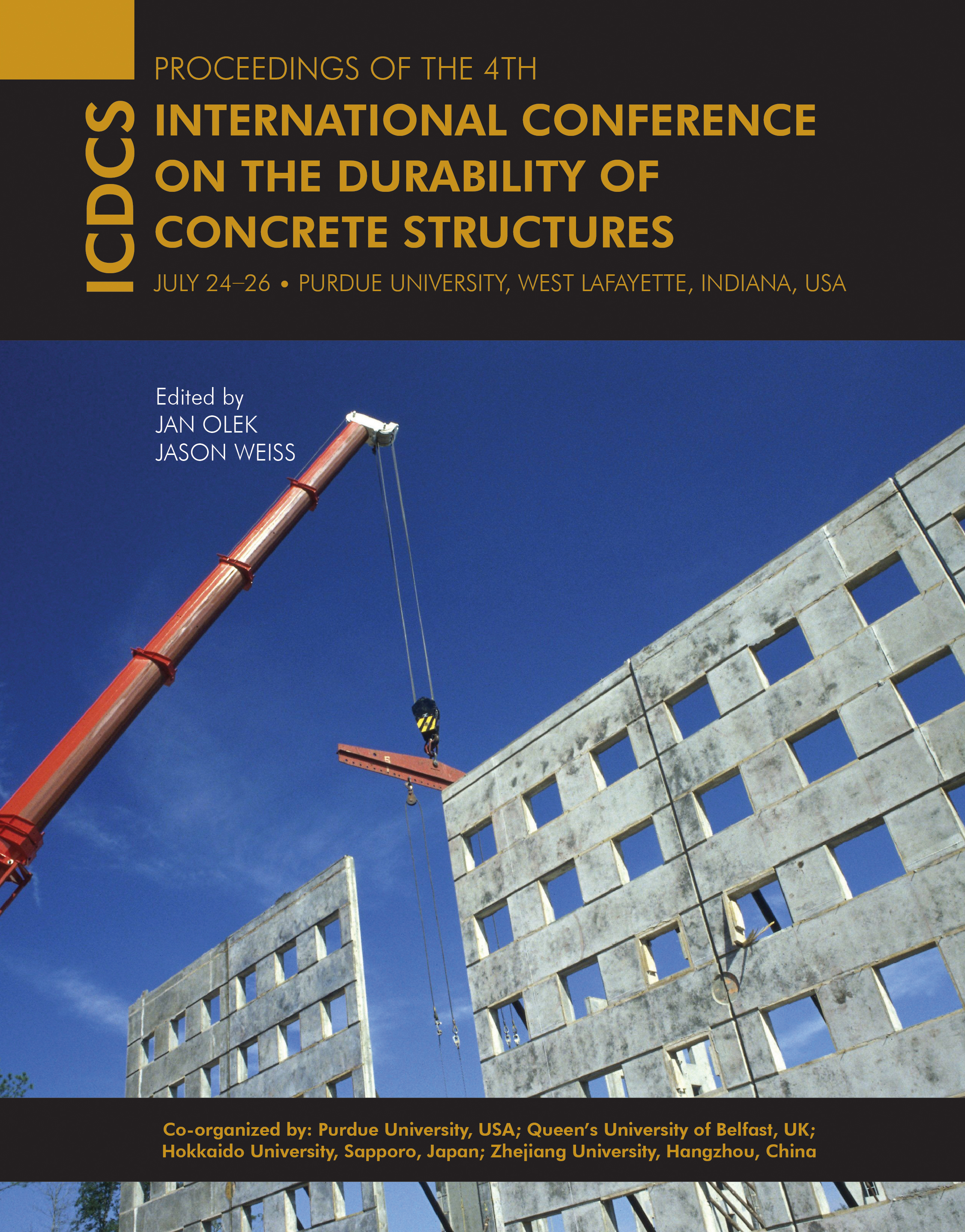Abstract
Deterioration of reinforced concrete members and their repair methods have been reported in various concrete published reports. Electrodeposition method is one of these repair methods for repairing deteriorated concrete members using an electrochemical mechanism. The purposes of the electrodeposition method are to fill cracks in concrete and to coat the concrete surface by electrodeposits of chemical compounds. This can be accomplished by passing a weak direct current (1.0–3.0 A/m2 of concrete surface area) between a reinforcing steel bar (cathode) in concrete and an external electrode (anode) located in an external solution near the concrete surface. This method also accomplishes corrosion protection and desalination/re-alkalization, as well as crack closure or surface coating by the electrodeposits. Therefore, it is considered that the electrodeposition is effective in repairing deteriorated concrete members because of chloride attack or carbonation. However, there is very little work on the selection of appropriate electrodeposition conditions such as the type of the cation, its concentration, or type of external electrode for repairing existing reinforced concretes. Therefore, the objective of this paper is to investigate the electrodeposition conditions such as external solution or an external electrode for repairing reinforced concrete structures. From this study, the most suitable electrodeposition conditions to repair deteriorated concrete members are found to be a magnesium acetate-based external solution and an aluminum sacrificial electrode.
DOI
10.5703/1288284315428
Development of Improved Electrodeposition Method for Repair of Reinforced Concrete Structures
Deterioration of reinforced concrete members and their repair methods have been reported in various concrete published reports. Electrodeposition method is one of these repair methods for repairing deteriorated concrete members using an electrochemical mechanism. The purposes of the electrodeposition method are to fill cracks in concrete and to coat the concrete surface by electrodeposits of chemical compounds. This can be accomplished by passing a weak direct current (1.0–3.0 A/m2 of concrete surface area) between a reinforcing steel bar (cathode) in concrete and an external electrode (anode) located in an external solution near the concrete surface. This method also accomplishes corrosion protection and desalination/re-alkalization, as well as crack closure or surface coating by the electrodeposits. Therefore, it is considered that the electrodeposition is effective in repairing deteriorated concrete members because of chloride attack or carbonation. However, there is very little work on the selection of appropriate electrodeposition conditions such as the type of the cation, its concentration, or type of external electrode for repairing existing reinforced concretes. Therefore, the objective of this paper is to investigate the electrodeposition conditions such as external solution or an external electrode for repairing reinforced concrete structures. From this study, the most suitable electrodeposition conditions to repair deteriorated concrete members are found to be a magnesium acetate-based external solution and an aluminum sacrificial electrode.





